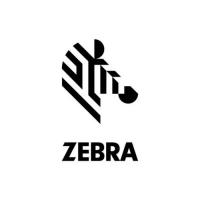Mobile Printer CPCLProgramming Manual P5-9
be an even number of digits in the data. If there is an
odd number of digits, the printer will automatically insert a
zero (0) at the beginning of the bar code.
There are two bar code varieties with a checksum:
Interleaved 2 of 5 “with checksum” and German Post
Code. German Post Code has fixed length – either 12 or
14 characters (including checksum).
Here is an example how to calculate modulo 10
checksum:
Step 1: To calculate the checksum, first ensure that you
are starting with an odd number of digits in the data.
If not, add a zero (0) to the beginning of the data.
Step 2: Multiply every other digit by 3, and add up the
numbers. So, if your data was “43827” your calcula-
tion should be (4 x 3) + 3 + (8 x 3) + 2 + (7 x 3) = 62.
Step 3: Divide this number by 10, resulting in 6 with a
remainder of 2. Subtract the remainder from 10. In
our example, 10 - 2 = 8. The checksum is this final
number, 8. Append this to the end of your data. Note
that if the remainder was a zero, your checksum
should be zero.
CODE 128 AND THE UCC-128 SHIPPING STANDARD
Code 128 is used for applications that need to contain
a large amount of data such as shipping applications,
marking blood donations, and any other application that
can vary in length between bar codes being scanned.
The bar code also contains a checksum as the last char-
INTERLEAVED 2 OF 5 SPECIFICATIONS
Ideal Ideal
Bar code Bar code Wide/Narrow Narrow Checksum
Symbology Type Input Length Characters Ratio Dot Width Calculation
Interleaved
2 of 5 I2OF5 Varies 0-9 only 2.5:1 2 See text
Interleaved 2 of 5 I2OF5C
Varies 0-9 only 2.5:1 2 See text
with checksum
German Post I2OF5G 11, 12,
0-9 only 2.5:1 2
mod 10,
Code 13 or 14 weights 4,9

